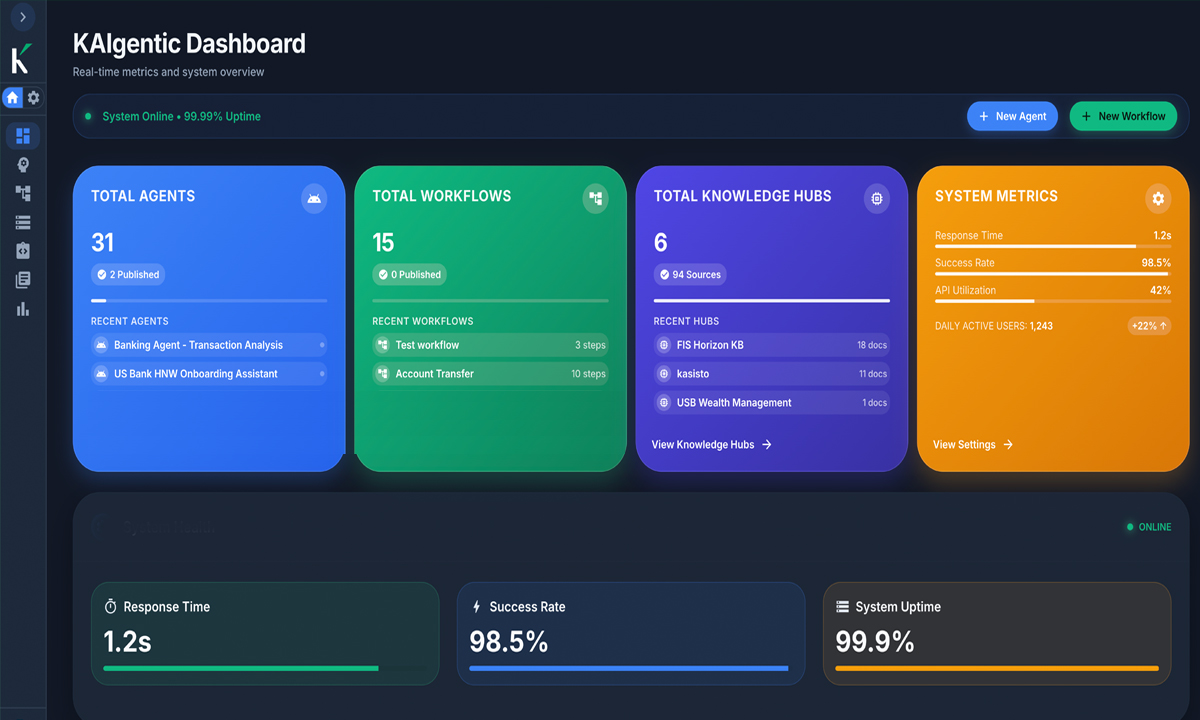As published in Bank Director.
The pace at which consumers adopt new technologies has never been faster. Whether it’s buying coffee, booking travel, or getting a ride, or a date, consumers expect immediacy, personalization, and satisfaction. Banking is no different. According to a study by Oracle, when banks fall short of their consumers’ digital expectations, a third of consumers are open to trying a non-bank provider to get what they want – and what they want, increasingly, is a digital experience that’s smart, intuitive, and easy to use.
Conversational AI—a platform that powers a virtual assistant across your mobile app, website, and messaging platforms—is core to providing the experience consumers want. Whether you choose to build or buy a conversational AI solution, it needs three key things.
Pre-packaged Banking Knowledge
A platform with deep domain expertise in banking is what gives you a head start and accelerates time to market. A solution fluent in banking and concepts such as accounts, transactions, payments, transfers, offers, FAQs, and more, is one that saves you time training it about the basics of banking. Deep domain expertise is also necessary for a virtual assistant or “bot” to hold an intelligent conversation.
Your conversational AI solution should already be deeply familiar with concepts and actions common in banking, including:
- Information about accounts – so customers can check balances and credit card details such as available credit, minimum payment and credit limit.
- Information about transactions – so customers can request transactions by specific accounts or account types, amount, amount range (or above, or under), check number, date or date range, category, location or vendor.
- Information about payments – so customers can move money and make payments using their bank accounts or a payment service such as Zelle or Venmo.
Human-like Conversations
Most conversational AI systems answer a question, but then leave it up to the customer as to what they should do next. Few conversational AI systems go beyond answering basic questions and helping customers accomplish one simple goal at a time, and that’s sure to disappoint some customers.
A conversational AI platform should be able to track goals and intents so bots and virtual assistants can do more for consumers. It should go beyond basic Natural Language Understanding and combine deep-domain expertise with the ability to reason and interpret context. This is what gives it the ability to help customers achieve multiple goals in a fluid conversation – creating a “human-like” conversation that not only understands what the customer is texting or saying but tracks what the customer is trying to do, even when the conversation jumps between multiple topics.
Platform Tools
Under the hood of every Conversational AI platform are the deep-learning tools. Effective analysis of data is at the core of every good conversational AI platform—understand how it collects and federates, builds, trains, customizes and integrates data. This will have a huge impact on the accuracy and performance of the virtual assistant or bot.
After you deploy the system, you want to be empowered to take full control of the future of your conversational AI platform and not be trapped in a professional services cycle. Make sure you have a full suite of tools that allow you to customize, maintain and grow the conversational experiences across your channels. You’ll need to measure engagement and continually train the virtual assistant to respond to ever-changing business goals, so you’ll want an easy way to manage content and add new features and services, channels, and markets.
Above All – Is It Proven in Production?
There is a huge difference between a proof of concept or internal pilot with a few hundred employees to a full deployment with a virtual assistant or bot engaging with customers at scale in multiple channels. A conversational AI platform is not truly tested until it’s crossed this chasm, and from there can improve and grow with additional use cases, products and services and new markets.
During the evaluation, ask for customer engagement metrics, AI training stats, and business KPIs based on production deployments. Delve into timelines related to integration – are the APIs integrating with your backend systems fully tested in production? Understand how the system is trained to extend and do more. What did it take to roll out new features with a system already deployed?
If the platform has been deployed in production several times with several different financial institutions, you know it has been optimized and tested for performance, scalability, security and compliance. You can have confidence the solution was designed to work with your back-end and front-end ecosystem, channels and infrastructure. Only then has it been truly validated and proven to integrate and adhere to many leading banks’ rigorous and challenging regulatory, IT and architecture standards and technologies.
There’s just no way to underscore the value of production deployments as a way to separate the enterprise-ready from the merely POC-tested solutions.
